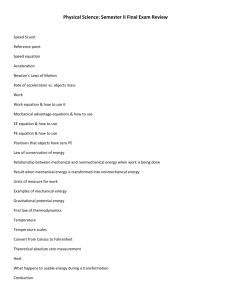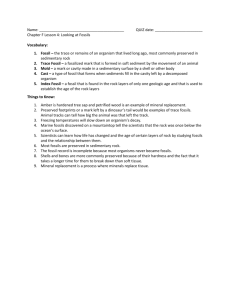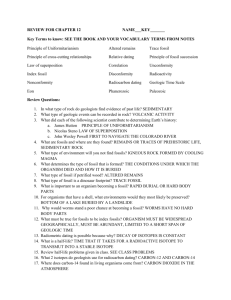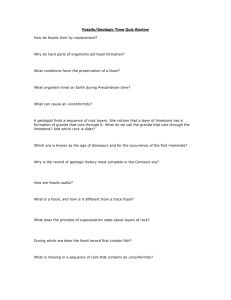Chapter 6
advertisement
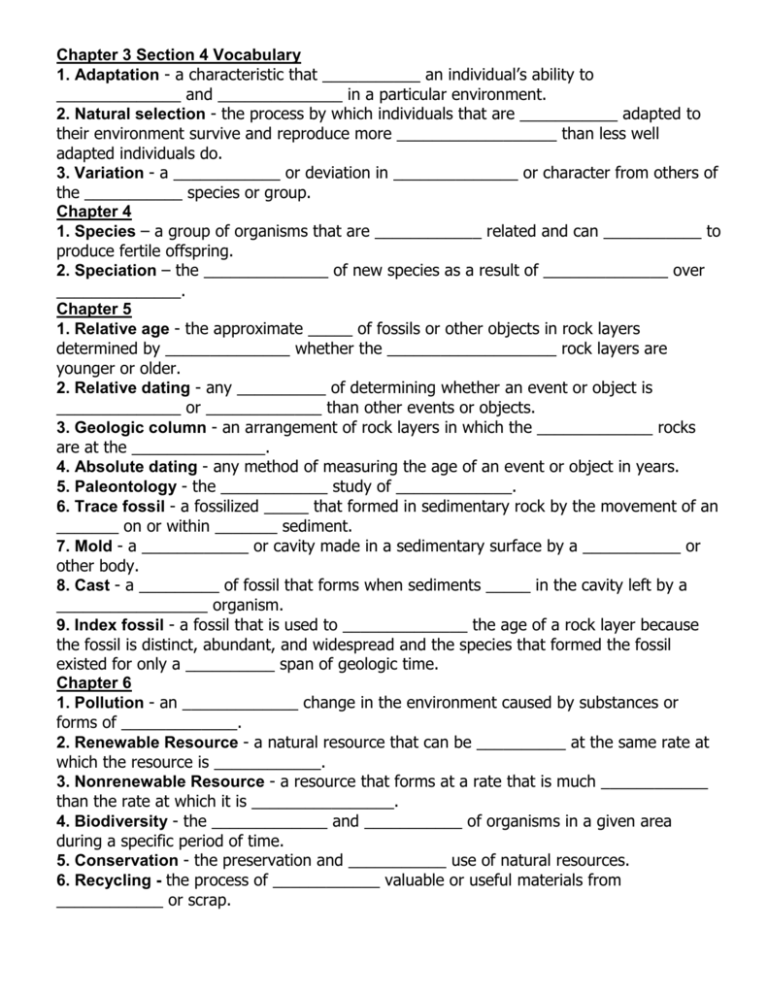
Chapter 3 Section 4 Vocabulary 1. Adaptation - a characteristic that ___________ an individual’s ability to ______________ and ______________ in a particular environment. 2. Natural selection - the process by which individuals that are ___________ adapted to their environment survive and reproduce more __________________ than less well adapted individuals do. 3. Variation - a ____________ or deviation in ______________ or character from others of the ___________ species or group. Chapter 4 1. Species – a group of organisms that are ____________ related and can ___________ to produce fertile offspring. 2. Speciation – the ______________ of new species as a result of ______________ over ______________. Chapter 5 1. Relative age - the approximate _____ of fossils or other objects in rock layers determined by ______________ whether the ___________________ rock layers are younger or older. 2. Relative dating - any __________ of determining whether an event or object is ______________ or _____________ than other events or objects. 3. Geologic column - an arrangement of rock layers in which the _____________ rocks are at the _______________. 4. Absolute dating - any method of measuring the age of an event or object in years. 5. Paleontology - the ____________ study of _____________. 6. Trace fossil - a fossilized _____ that formed in sedimentary rock by the movement of an _______ on or within _______ sediment. 7. Mold - a ____________ or cavity made in a sedimentary surface by a ___________ or other body. 8. Cast - a _________ of fossil that forms when sediments _____ in the cavity left by a _________________ organism. 9. Index fossil - a fossil that is used to ______________ the age of a rock layer because the fossil is distinct, abundant, and widespread and the species that formed the fossil existed for only a __________ span of geologic time. Chapter 6 1. Pollution - an _____________ change in the environment caused by substances or forms of _____________. 2. Renewable Resource - a natural resource that can be __________ at the same rate at which the resource is ____________. 3. Nonrenewable Resource - a resource that forms at a rate that is much ____________ than the rate at which it is ________________. 4. Biodiversity - the _____________ and ___________ of organisms in a given area during a specific period of time. 5. Conservation - the preservation and ___________ use of natural resources. 6. Recycling - the process of ____________ valuable or useful materials from ____________ or scrap. Chapter 3 Section 4 Vocabulary 1. Adaptation - a characteristic that ___________ an individual’s ability to ______________ and ______________ in a particular environment. 2. Natural selection - the process by which individuals that are ___________ adapted to their environment survive and reproduce more __________________ than less well adapted individuals do. 3. Variation - a ____________ or deviation in ______________ or character from others of the ___________ species or group. Chapter 4 1. Species – a group of organisms that are ____________ related and can ___________ to produce fertile offspring. 2. Speciation – the ______________ of new species as a result of ______________ over ______________. Chapter 5 1. Relative age - the approximate _____ of fossils or other objects in rock layers determined by ______________ whether the ___________________ rock layers are younger or older. 2. Relative dating - any __________ of determining whether an event or object is ______________ or _____________ than other events or objects. 3. Geologic column - an arrangement of rock layers in which the _____________ rocks are at the _______________. 4. Absolute dating - any method of measuring the age of an event or object in years. 5. Paleontology - the ____________ study of _____________. 6. Trace fossil - a fossilized _____ that formed in sedimentary rock by the movement of an _______ on or within _______ sediment. 7. Mold - a ____________ or cavity made in a sedimentary surface by a ___________ or other body. 8. Cast - a _________ of fossil that forms when sediments _____ in the cavity left by a _________________ organism. 9. Index fossil - a fossil that is used to ______________ the age of a rock layer because the fossil is distinct, abundant, and widespread and the species that formed the fossil existed for only a __________ span of geologic time. Chapter 6 1. Pollution - an _____________ change in the environment caused by substances or forms of _____________. 2. Renewable Resource - a natural resource that can be __________ at the same rate at which the resource is ____________. 3. Nonrenewable Resource - a resource that forms at a rate that is much ____________ than the rate at which it is ________________. 4. Biodiversity - the _____________ and ___________ of organisms in a given area during a specific period of time. 5. Conservation - the preservation and ___________ use of natural resources. 6. Recycling - the process of ____________ valuable or useful materials from ____________ or scrap.

